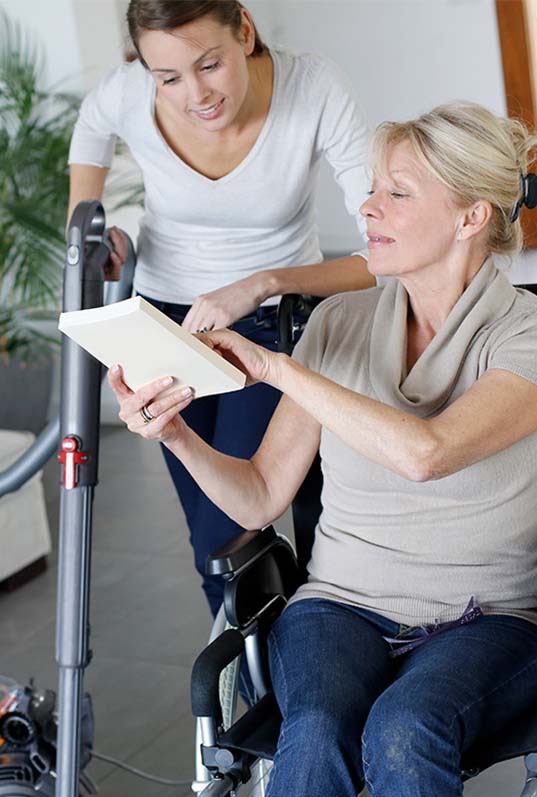Safeguarding Policy
Safeguarding Adults Policy
This service has a zero-tolerance approach to all forms of abuse, neglect and improper treatment. This policy identifies our approach to the prevention, detection, reporting and management of abuse within our service as well as the promotion of the rights of service users to live their lives free from inhuman and degrading treatment.
Abuse, as defined in this policy includes all forms of unlawful discrimination and restraint, neglect, degrading treatment, unnecessary or disproportionate restraint and the unlawful deprivation of liberty as it applies to any adult.

Principles
The six principles of Safeguarding which underpin our approach are:
Principles
The Six Principles of Safeguarding which underpin our approach are:
Empowerment
We will encourage Service Users to make their own decisions and provide them with support and information.
From the Service Users perspective:
I am consulted about the outcomes I want from the safeguarding process, and these directly inform what happens.
Prevention
We will develop Prevention Strategies to prevent abuse and neglect, and which promote resilience and self-determination.
From the Service Users perspective:
I am provided with easily understood information easily about what abuse is, how to recognise the signs and what I can do to seek help.
Proportionate
We will ensure that a proportionate and least intrusive response is made balanced with the level of risk.
From the Service Users perspective:
I am confident that the professionals will work in my interest and only get involved as much as needed.
Protection
We will ensure that Service Users are offered ways to protect themselves, and there is a co-ordinated response to safeguarding.
From the Service Users perspective:
I am provided with help and support to report abuse and neglect. I am supported to take part in the safeguarding process to the extent to which I want and to which I am able.
Partnerships
We will work with other agencies where required to protect and safeguard our Service Users.
From the Service Users perspective:
I am confident that information will be appropriately shared in a way that takes into account its personal and sensitive nature. I am confident that agencies will work together to find the most effective responses for my own situation.
Accountability
We will be accountable and transparent in delivering a safeguarding response.
From the Service Users perspective:
I am clear about the roles and responsibilities of all those involved in the investigation and solution to the safeguarding problem.
RISK MANAGEMENT
We recognise that safeguarding is fundamentally about managing risk and the safety and wellbeing of a Service User in line with the above six principles. The aim of risk management is:
- To promote, and thereby support inclusive decision making as a collaborative and empowering process, which takes full account of the individual’s perspective and views of primary carers.
- To enable and support the positive management of risks. Where this is fully endorsed by the multi-agency partners as having positive outcomes.
- To promote the adoption by all staff of ‘defensible decisions’ rather than ‘defensive actions’.
Actions we will take to prevent abuse from occurring
- Inform all staff of policies and procedures in place within our organisation to prevent abuse and ensuring they are aware of the types of abuse which effect Service Users and the step taken to report such incidents.
- Implementing a robust recruitment policy that demands that all potential staff have the required references in place and are subject to clearance through the DBS criminal records and barred list. Equivalent checks will be made for staff employed from overseas.
- For any professionally registered staff, it is the responsibility of the manager to ensure that checks are made with their registering body, e.g. the NMC, to ascertain the status of the applicant’s registration category.
- Ensure that all staff at all levels are given the correct training about abuse, harm and safeguarding at induction and update this annually.
- Ensure our Staff receive training and are aware of how to protect the rights of others. As part of the staff induction, staff will be made aware of discrimination, which might amount to discriminatory abuse or cause psychological harm. This includes discrimination on the grounds of age, disability, gender, gender identity, race, religion, belief or sexual orientation or any other, or combination of, protected characteristics.
- Incorporated into our staff induction is information on diversity, beliefs and values of people who use our services and how these impact on their everyday lives.
- We foster an environment of openness and transparency within our service where staff, Service Users and other stakeholders feel able to report any concerns they may have of a Service User, or any other adult, being subject to abuse without fear of retribution and feeling fully supported.
- Ensuring robust policies, procedures and systems are in place for when staff have any dealings with Service Users money, property or financial affairs.
- Helping Service Users to manage relationships and situations which could become potentially abusive or harmful.
- Ensuring our staff understand they must take appropriate action when abuse and harm is reported to them, or they suspect it for some other reason.
- Report any safeguarding concerns to the Social Services Safeguarding Team and working cooperatively with any agencies in the management of any incident.

Types of Abuse
According to the Social Care Institute of Excellence there are 10 types of abuse:
- Physical abuse.
- Domestic violence or abuse.
- Sexual abuse.
- Psychological or emotional abuse.
- Financial or material abuse.
- Modern slavery.
- Discriminatory abuse.
- Organisational or institutional abuse.
- Neglect of acts of omission.
- Self-neglect.
Other identified forms of abuse include:
-
- Religious Abuse.
Chemical Abuse (medication).
Ill Treatment
The Criminal Justice and Courts Act 2015 draws attention to ill treatment carried out by of a carer or a provider. Ill treatment is defined as:
- Deliberate conduct on the part of the offender which could properly be described as ill-treatment irrespective of whether it damaged or threatened to damage the health of the victim; and
- A guilty mind involving either an appreciation by the offender at the time that he was inexcusably ill-treating a patient or that he was reckless as to whether he was inexcusably acting in that way.
This makes it an offence for a member of staff who has the care of another individual by virtue of being a care worker to ill-treat or wilfully to neglect that other individual.
Ill treatment is a punishable offence with a sentence of up to 5 years.
Ill treatment may apply to the way in which a service is run and therefore includes individuals who supervise or manage staff providing care as well as directors or similar officers of an organisation which provides such care.
The intention of the Act is to ensure that the individual offence can apply to any individual perpetrator, not just those on the front line of care provision. However, it will only apply where the individual supervisor, director, etc. has directly committed ill-treatment or wilful neglect as they are not liable for the individual offence in respect of the acts or omissions of others they supervise or manage.


It is recognised that different forms of abuse give rise to different signs, and that the signs may vary between individuals. Signs of abuse may include, but are not restricted to:
- Injuries which are unexplained or inconsistent with the person’s lifestyle including bruises, cuts, burns, scalds, welts including in inappropriate parts of the body.
- A high frequency of injuries.
- Unexplained falls.
- Behavioural changes including avoiding friends, self-harm, poor concentration, sleep disturbance, aggression, tearfulness.
- Over or under-eating.
- Avoidance of health or social care professionals and carers.
- Attention seeking behaviours.
- Poor self-esteem and self-blaming.
- Being humiliated in front of others.
- Limited access to money or personal possessions.
- Being poorly / inappropriately dressed or in dirty or damaged clothing.
- Being dirty or unkempt.
- Repeated unexplained infections / genital discharge, or sexually transmitted diseases.
- Pregnancy in a woman who is unable to consent to sexual intercourse.
- Reluctance to be alone with someone, being quiet when they are present.
- Pressure sore development.
- Accumulation of untaken medications.
Identifying Abusers
We will work with the statutory agencies to help identify the source of abuse which is reported.
As a service, we recognise that abuse can come from several different sources. It is our responsibility to protect those in our charge from abuse. These sources may be:
- The staff and management of the service.
- Volunteers working in the service.
- Service Users’ friends and relatives.
- Visitors


Safeguarding Lead
The manager has designated Name: Jodi Whawell as safeguarding lead with overarching responsibilities regarding safeguarding in our Service.
The safeguarding lead may be the manager of the Service or other senior person in the Service.
The manager must ensure:
- People who use our service, their advocates, those lawfully acting on their behalf and those close to them, as well as to our staff, know who the lead person is, what they do, how to contact them, and who to speak to if they are unavailable – including the service manager, the deputy, clinical lead or senior staff member in the office or on-call.
- It is clear who is accountable for different aspects of safeguarding within the Agency, in addition to the roles and responsibilities of the safeguarding lead.
- Safeguarding responsibilities should be included in the job description of all Agency staff, including at board level
- That all staff understand how to meet their safeguarding responsibilities in their day-to-day work within the Agency. This includes listening to any allegations of abuse, maintaining contemporaneous records and reporting the allegations through the service, and externally, as appropriate to the circumstance.
- The manager should ensure that staff are kept up to date about changes to national and local safeguarding arrangements e.g. via training, handovers, supervision, staff newsletters and information boards.
Role Of Safeguarding Lead
The services safeguarding lead will:
- Be available for people who use our service, their advocates, those lawfully acting on their behalf and those close to them, as well as to our staff who wish to discuss any safeguarding issues or concerns.
- Ensure that cases of suspected or actual abuse or safeguarding concerns are referred to the appropriate agencies.
- Ensure that all staff are fully trained in safeguarding, updated annually, and know how to spot and raise concerns.
- Help to maintain an effective staff supervision programme which includes discussions about preventing, identifying and managing abuse and neglect.
- Undergo regular refresher training to ensure their safeguarding knowledge up to date.
- Ensure that adequate reporting and recording systems are in place for safeguarding procedures, and that there are appropriate transferal procedures for records if Service Users move.
- Ensure that safeguarding policies and procedures are up to date reflecting the most recent statutory guidance, and everyone who has safeguarding duties are familiar with any updates.
- Communicate with people who use our service, their advocates, those lawfully acting on their behalf and those close to them, as well as to our staff about the services policies and procedures, as well as any concerns or referrals where appropriate.
- Complying with local and national safeguarding requirements.

Who to Contact
The Care Quality Commission – who are responsible for the regulation of adult social and health care in England:
http://www.cqc.org.uk/contact-us · Phone: 03000 616161 · Email: [email protected] Care Quality Commission Citygate Gallowgate Newcastle upon Tyne NE1 4PA
Oxfordshire County Council
County Hall, New Road, Oxford, OX1 1ND
Local Social Services Safeguarding Team:
Telephone: 01865 897983
Emergency Out of Hours:0800 833408
E mail: https://www.oxfordshire.gov.uk/contactus/contact-safeguarding-service
Local Authority Safeguarding Adult Board:
Address Safeguarding Adults Team, Abbey House, Abbey Close, Abingdon.OX14 3JD
Telephone: 0345 0507666 | 01865 328232
Emergency Duty Service: 0800 833 408
E mail: [email protected]
INTERNAL CONTACT (Manager)
Name of Internal Contact: Michael Chingosha
Address: Unit 8-10, Eyston Way, Abingdon OX14 1TR, UK.
Telephone: 01865 376660
Mobile: 07936 509190
E mail: [email protected]
INTERNAL CONTACT (Safeguarding Lead)
Name of Internal Contact: Jodi Whawell
Address: Unit 8-10, Eyston Way, Abingdon OX14 1TR, UK.
Telephone: 01865 376660
Mobile: 07936 509190
E mail: [email protected]
INTERNAL CONTACT (Out of Hours)
Telephone: 01865 376660
Mobile: 07936 509190
E mail: [email protected]
Independent charity Public Concern at Work
0808 168 0225 or by email at [email protected]. They can talk staff through the options address is www.pcaw.co.uk
Let's help you!
Contact us today to arrange free, no-obligation care consultation for you or your loved one. Please fill out the form below. Our caring, capable, knowledgeable team are ready and willing to answer any questions or concerns you may have and will get back to you shortly.
